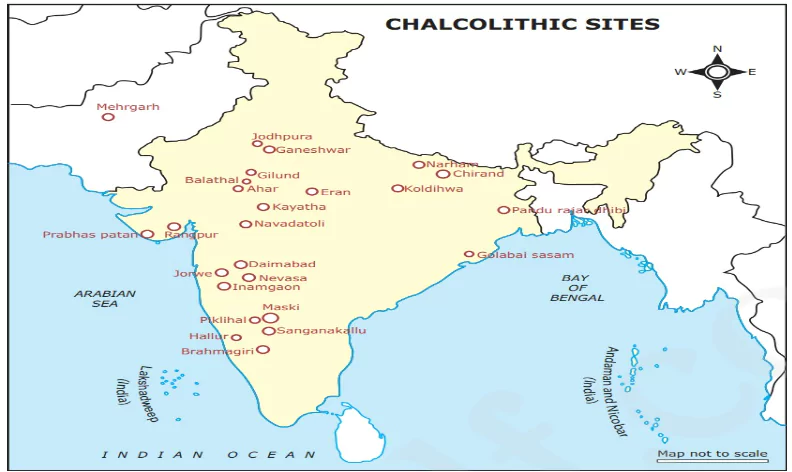![]() April 25, 2024
April 25, 2024
![]() 9560
9560
![]() 0
0
The Chalcolithic Period, also known as the Copper Age, marked a significant transitional phase in human prehistory, characterized by the emergence of metallurgy alongside the continued use of stone tools, laying the groundwork for the Bronze Age.

|
Early Chalcolithic Sites |
|
|
|
|
|
|
|
|
|
|
|
|
| Ochre Coloured Pottery Ware culture (2600-1200 BC)
It is found in northern India in the Indo-Gangetic plain dating to the Chalcolithic period.
|
Arts and crafts: The people were proficient coppersmiths with skill in stonework and produced numerous microliths (tiny stone tools). They had knowledge of spinning and weaving and expertise in cloth manufacturing.
Burial Practices (regional variation): In Maharashtra, burials occurred under house floors in north to south position, whereas in South India, the position was east to west.
Religious Worship: Terracotta figurines, such as female figurines (indicate reverence for the mother goddess), stylized bull terracottas in Malwa and Rajasthan, symbolised a religious cult.
Society: Emergence of social inequalities.
| Importance of the Chalcolithic Phase | Limitations of Chalcolithic Cultures |
|
|
|
Must Read |
|
| Current Affairs | Editorial Analysis |
| Upsc Notes | Upsc Blogs |
| NCERT Notes | Free Main Answer Writing |
<div class="new-fform">
</div>
Latest Comments